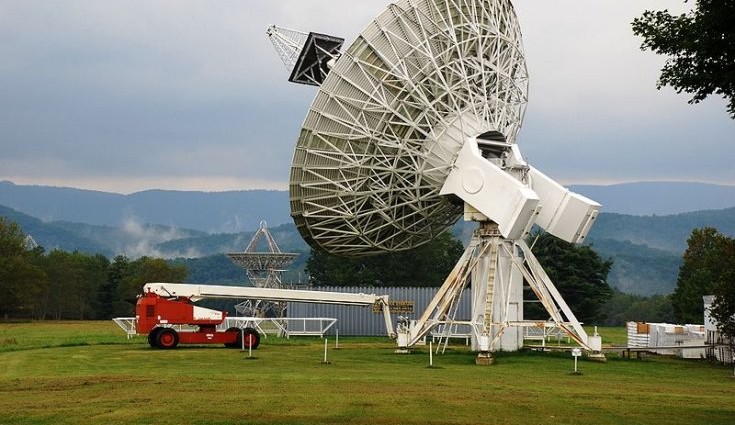Six more fast radio bursts have been discovered coming from the same mystery cosmic source

Six additional repeating fast radio bursts have been discovered coming the same unknown source in space. The FRBs came from the same region beyond the Milky Way where 10 bursts had previously been detected – and their discovery should give a greater insight into what caused them.
FRBs are radio signals from deep space that last just a few milliseconds. The first FRB was detected in 2001 and since then over a dozen have been found in telescope data. However, these all appeared to be one-off events, with no two bursts coming from the same location. This means follow-up observations were not possible, keeping their source a mystery.
Current theories as to their cause involve a cataclysmic event like a neutron star collapsing into a black hole or a supernova. Another option is they are coming from a young, highly magnetised, extragalactic neutron star.
In March, scientists announced the discovery of the first repeating FRBs. Ten bursts were recorded coming from the same direction as FRB 121102 – a spot in space far beyond the Milky Way.
Their findings, published in the journal Nature, showed the bursts had the same dispersion measurements as the original FRB, indicating the source must have survived whatever event produced the FRB in the first place. As a result, the bursts cannot be being produced by a one-off event.
Bursts were discovered with the Green Bank telescopeJarek Tuszynski / Wikimedia
ed by Paul Scholz of McGill University has found six more FRBs coming from the same region of space as FRB 121102. The study, published in The Astrophysical Journal, said: "We report on radio and X-ray observations of the only known repeating Fast Radio Burst (FRB) source, FRB 121102. We have detected six additional radio bursts from this source: five with the Green Bank Telescope at 2 GHz, and one at 1.4 GHz with the Arecibo Observatory, for a total of 17 bursts from this source."
Mystery radio signals from space recorded live from 5.5 billion light years away
FRBs observed with the Arecibo were found to be significantly longer than the intrinsic widths of those found with the Parkes telescope.
The team said their discovery shows that – at least for this source – FRBs cannot be coming from a cataclysmic event. What is causing them, however, remains unknown.
"Whether FRB 121102 is a unique object in the currently known sample of FRBs, or all FRBs are capable of repeating, its characterisation is extremely important to understanding fast extragalactic radio transients," they said.
Политика конфиденциальности | Правила пользования сайтом









